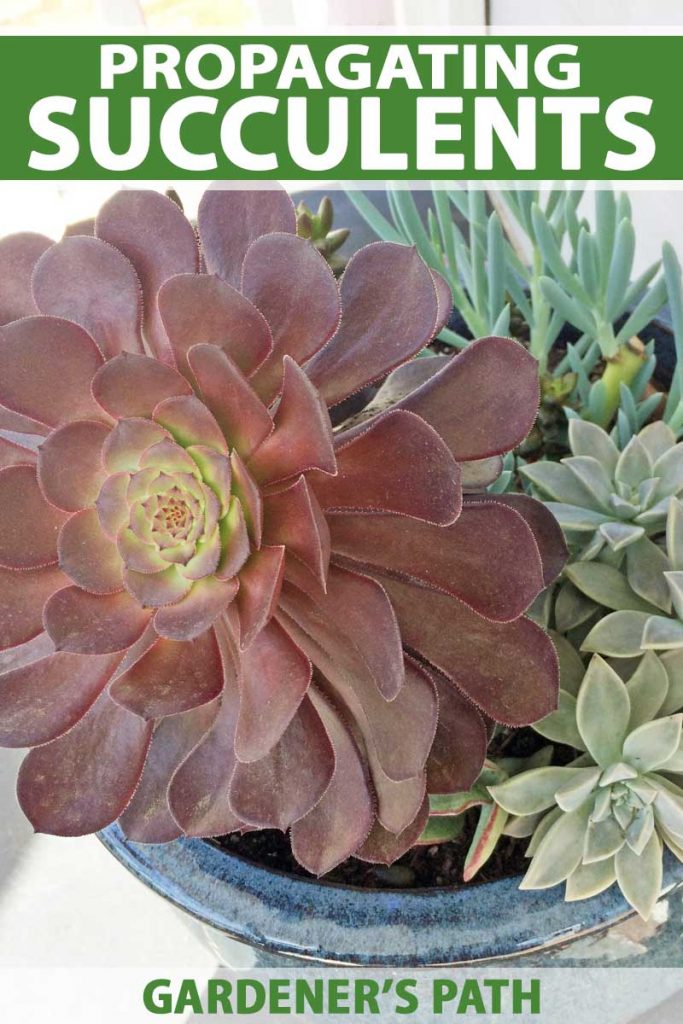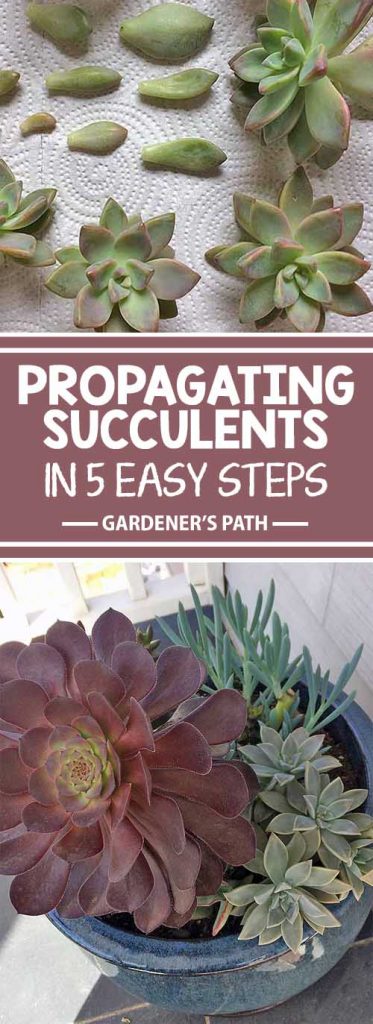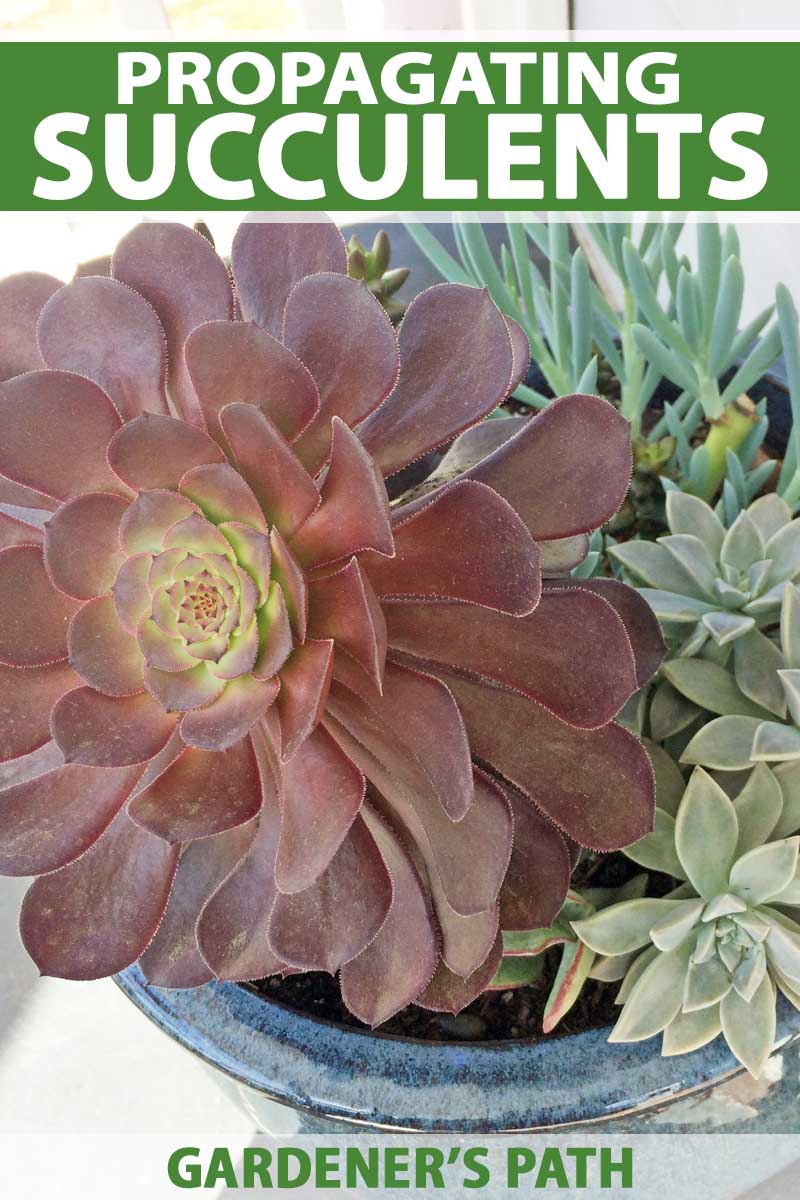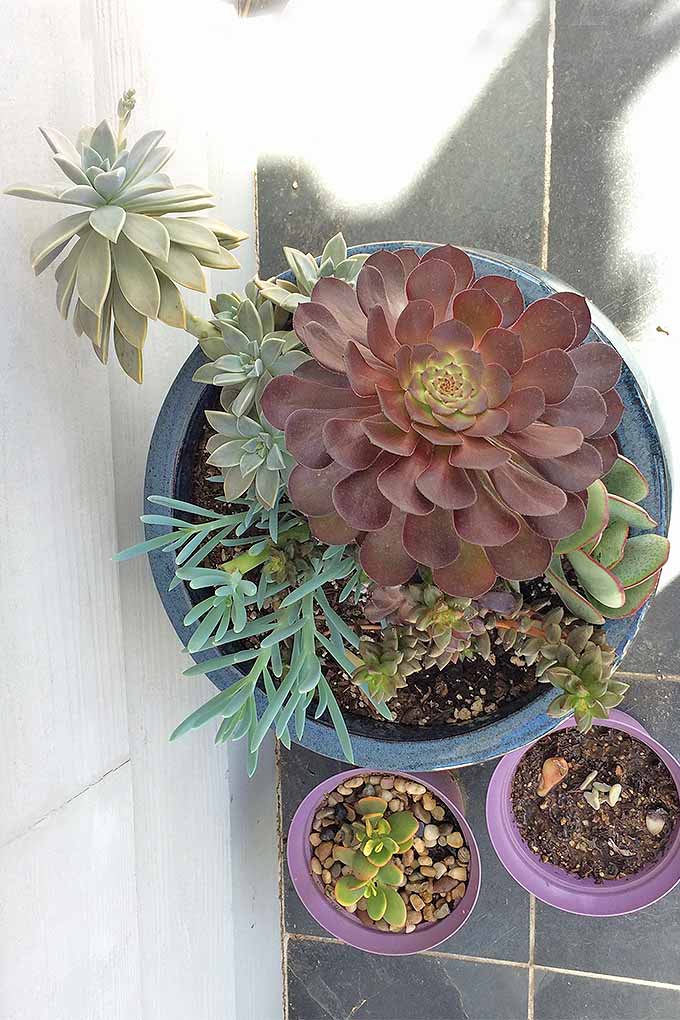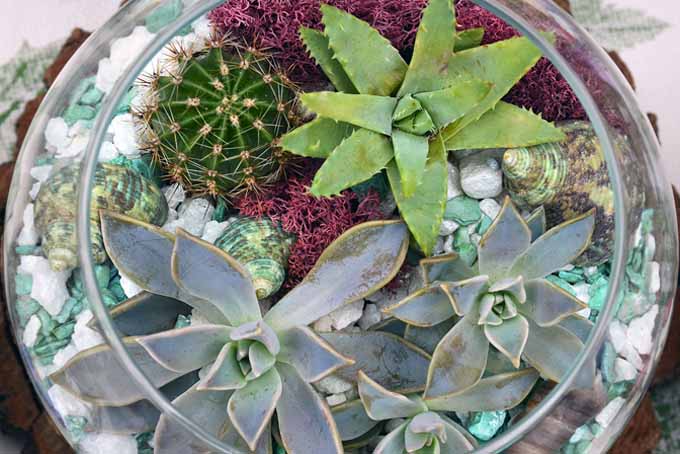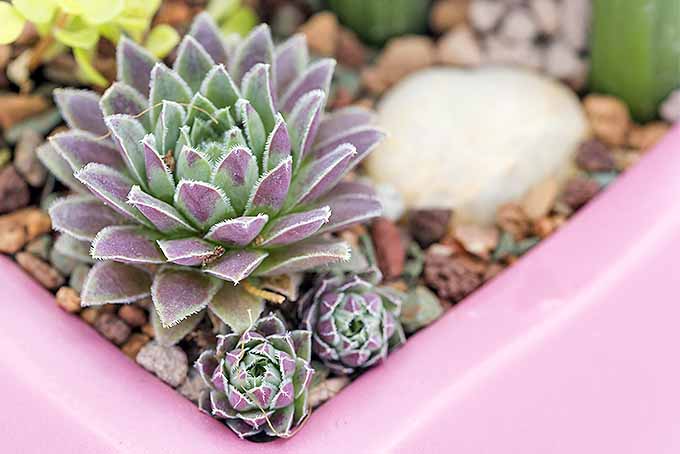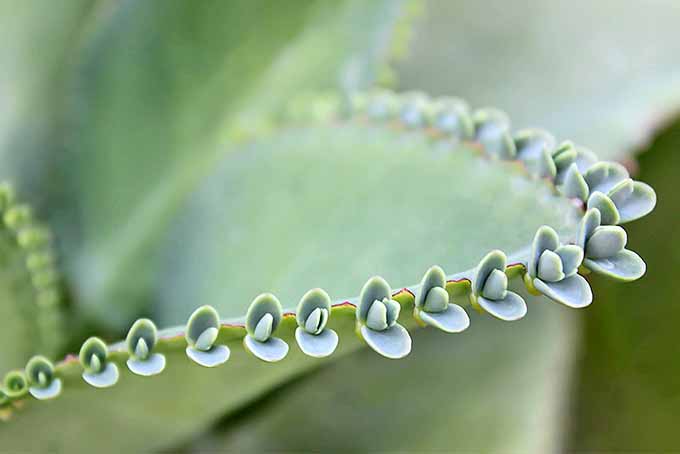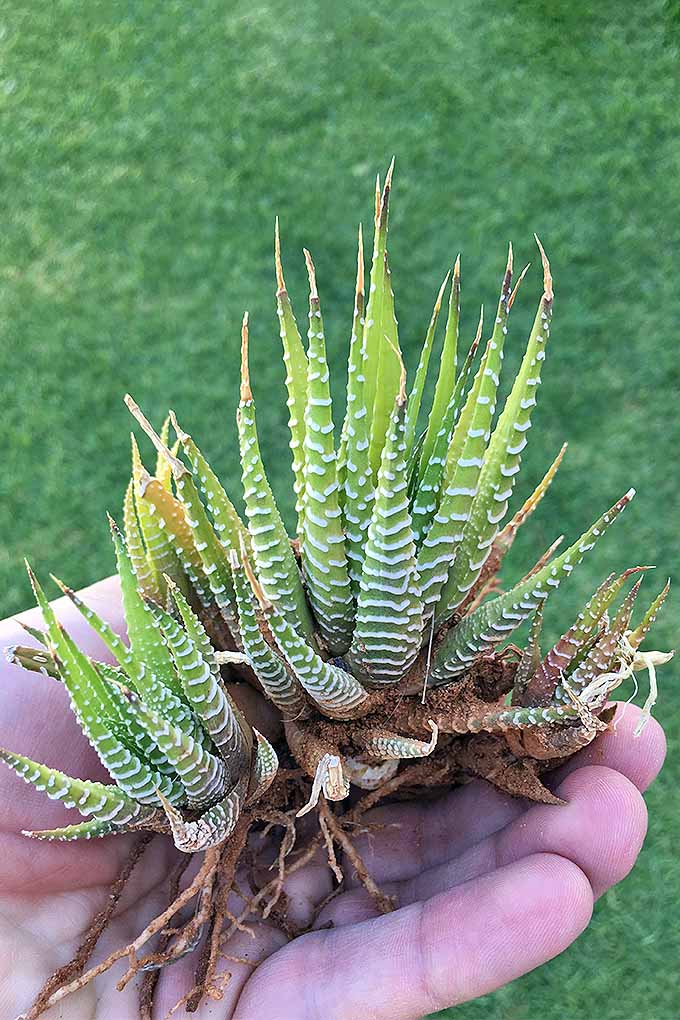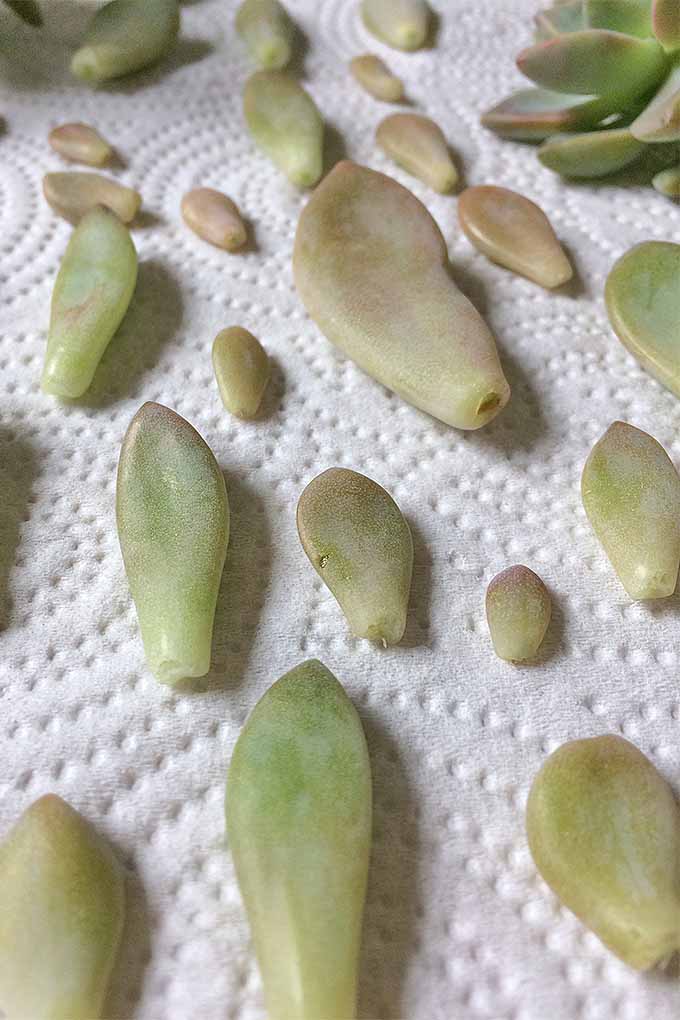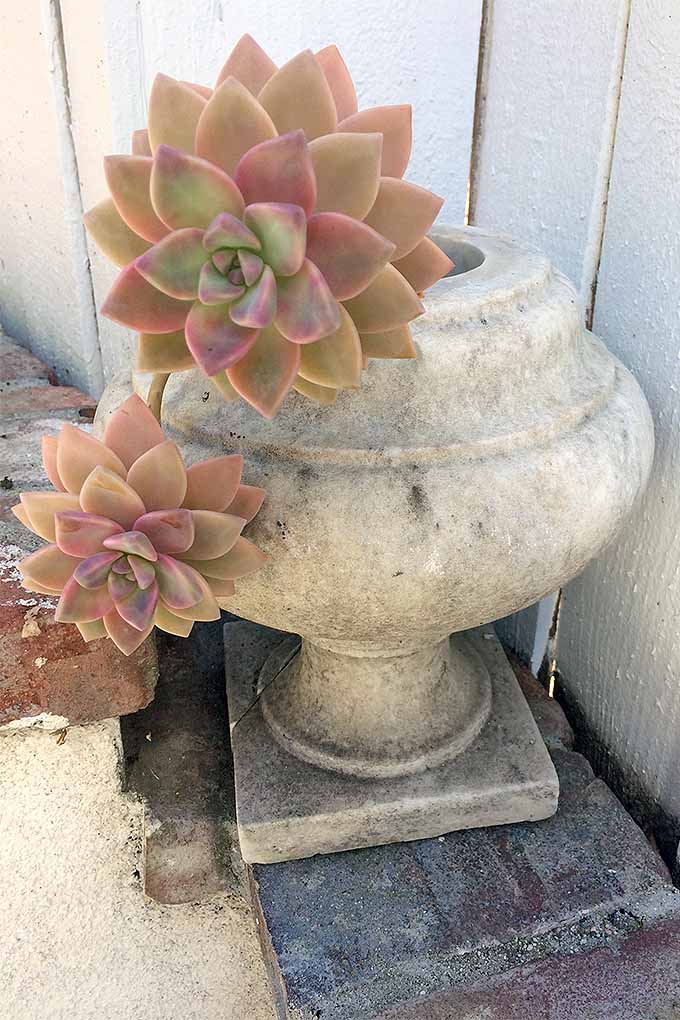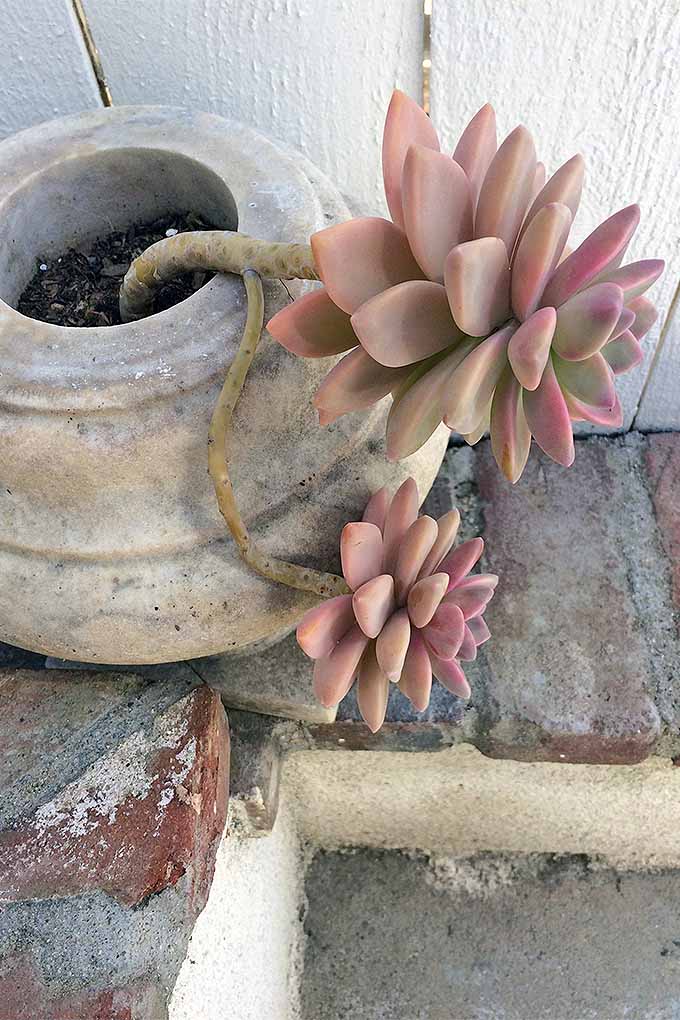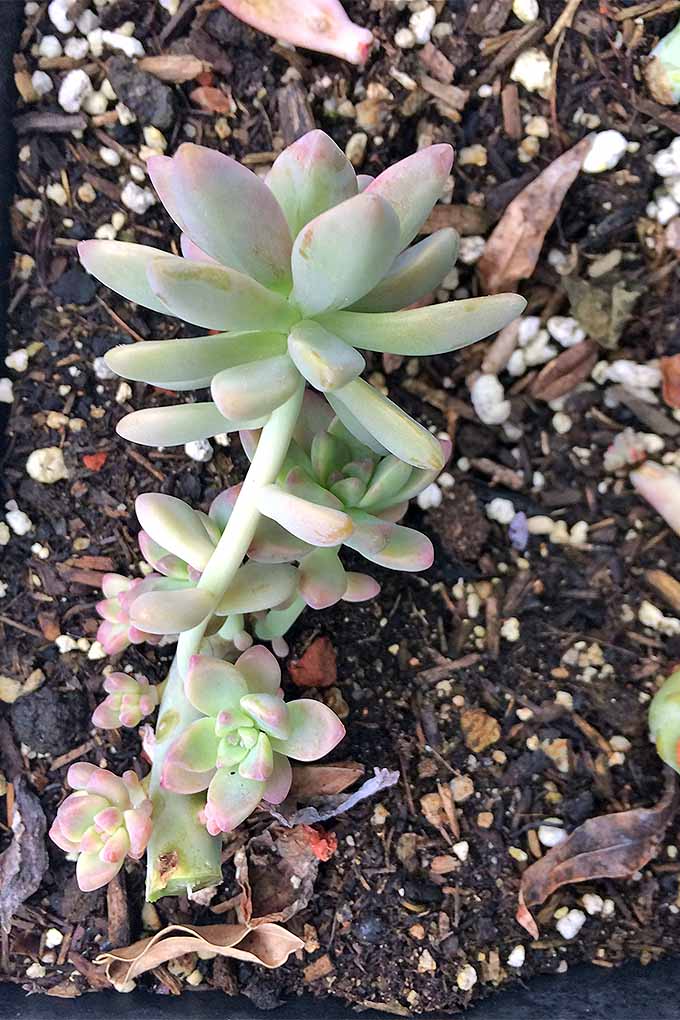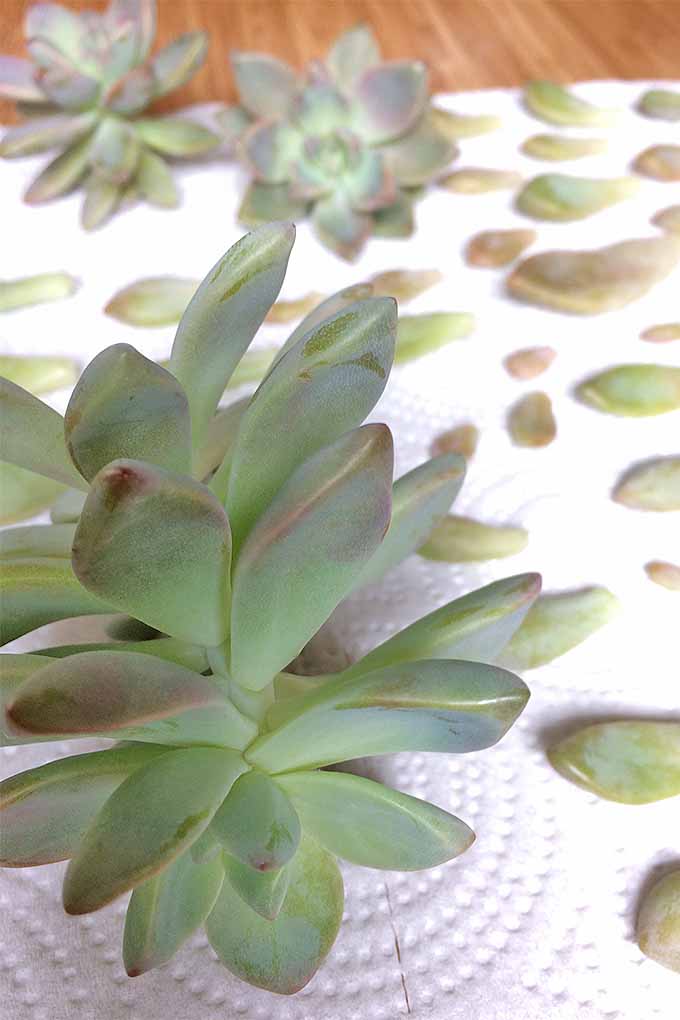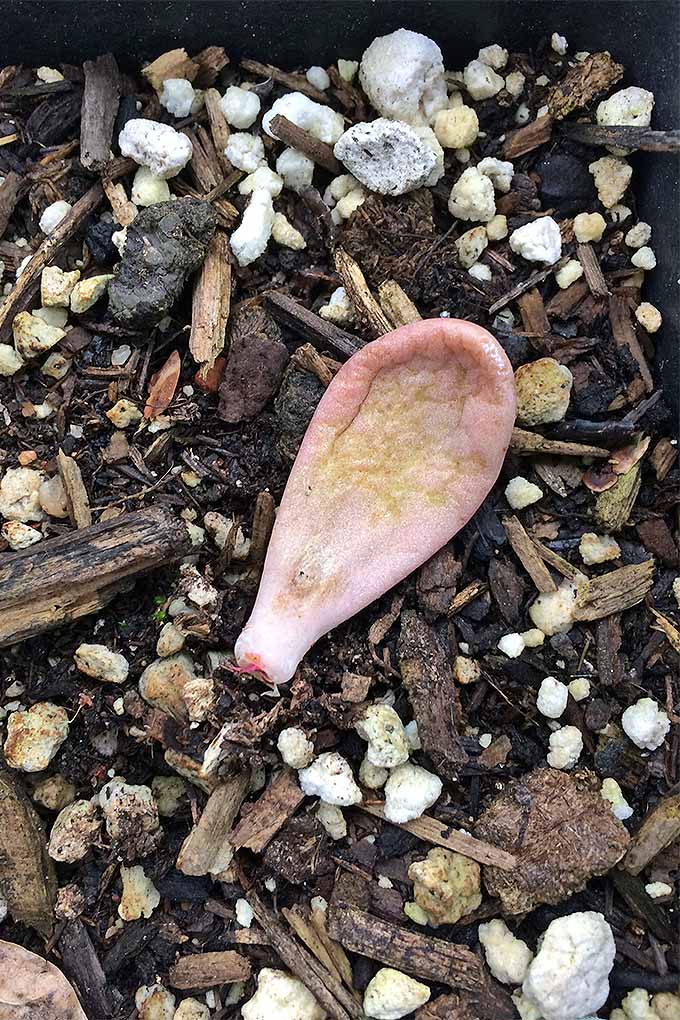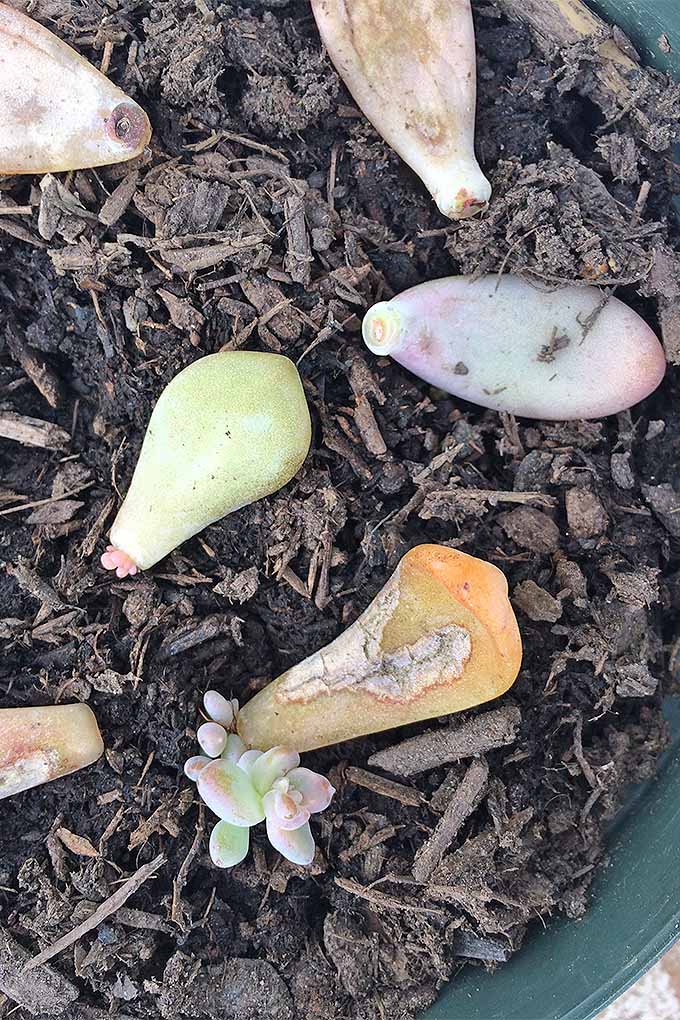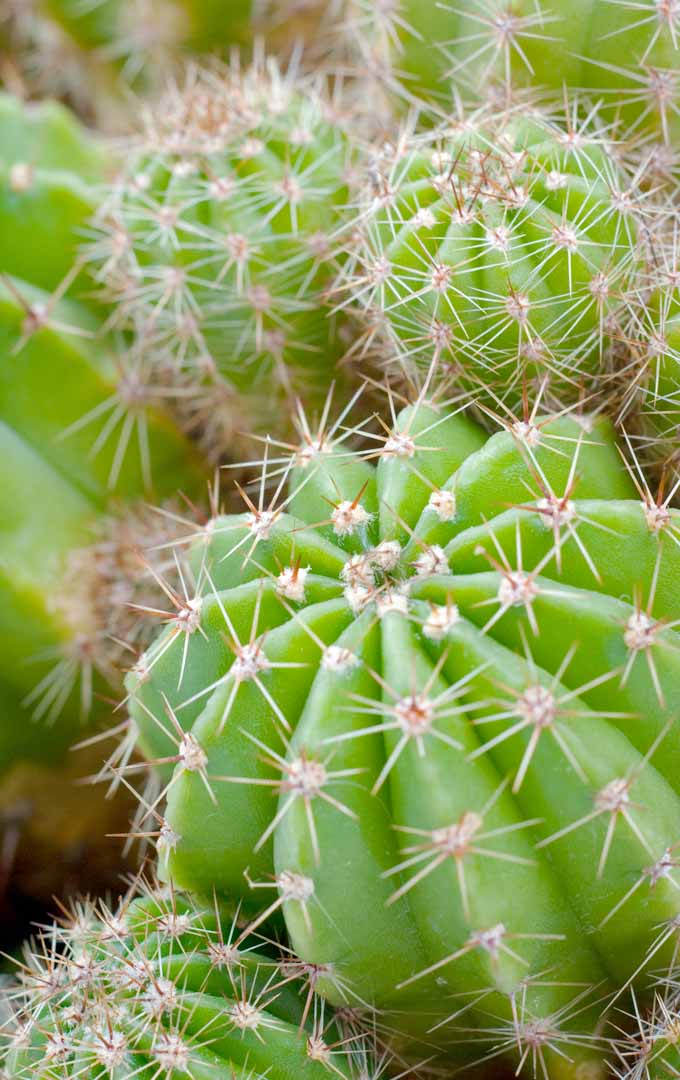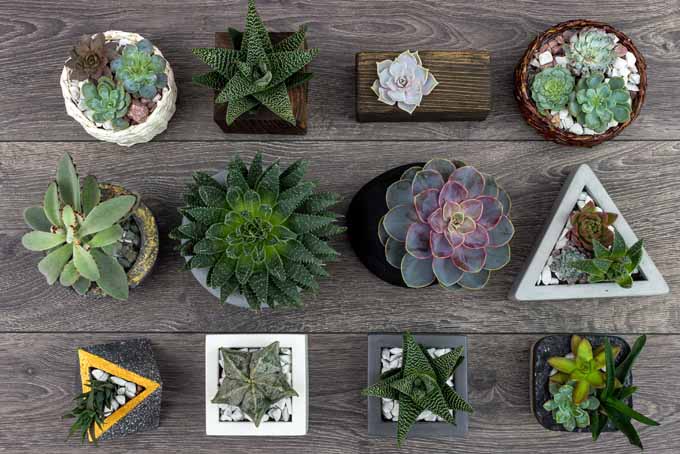It’s a type of “xerophyte,” a shallow-rooted wonder that thrives in dry climates and stores water in fat, fleshy leaves and stems. We link to vendors to help you find relevant products. If you buy from one of our links, we may earn a commission. From the smooth blue rosettes of echeveria hugging the soil in compact clusters, to the towering six-foot Agave americana stretching toward the summer sun, succulents are varied and fascinating plants. Succulents grow outdoors in temperate climates, and make excellent additions to xeriscapes, where irrigation is minimal. They’re at home between pavers, in rock gardens, and peeking out from crevices in stone walls. These versatile plants also thrive indoors in pots with good drainage, as well as in terrariums, provided they are watered sparingly. My favorites are miniature varieties. I like to plant them in interesting containers, grouped to create an eclectic desertscape. You’re going to fall in love with these low-maintenance beauties, and knowing how to propagate them means you can grow as many as your heart desires.
Be Fruitful and Multiply
Succulent plant propagation is a breeze. Of course, you may start from seeds, but it’s easier and faster to use the plants you have to produce even more. Here are two easy methods:
Dividing
You may divide a plant in two ways.
1. Plantlet Removal
Remove plantlets, or offsets, that have sprung up alongside the mother plant. These are fully-formed and rooted mini-plants that can grow independently. With echeveria, a rosette-forming succulent, we call the main plant the “hen” and the plantlets are referred to as “chicks.” With barrel cactus, they are known as “pups.” Some succulents drop plantlets. Like seeds, they take root where they fall.
2. Root Separation
Unearth an entire plant and gently tease the roots apart. Plant the separated clumps individually. Nestle your plant carefully into it and gently cover the roots with about an inch of soil. Tamp gently to secure.Wait a day, and then lightly water the soil around the plant. You can also mix a handful of sand or perlite into potting soil. The proper mix promotes drainage and provides nutrients. Hoffman Organic Cactus and Succulent Soil Mix, 4 Quarts Wait a day, then water sparingly. Return outdoor plants to the garden when the sun is not directly overhead. Work the soil until it is crumbly, mound it up a bit, and make a shallow depression with room for sprawling roots.
Cutting
With the cutting method, just cut off a piece of leaf or stem, let it dry, and you’ll have roots and shoots in no time. The trick is to keep it totally dry. Here are two methods:
1. Leaf Removal
Randomly remove several leaves, dry them out, let them grow roots, and plant.
2. Beheading
This is a good fix for a plant that has grown tall and spindly, or whose leggy bare limbs drape downward like a pendant. Simply cut the head of the plant off the lengthy stem, leaving about an inch of stem attached. Dry it out, let it grow roots, and plant. The remaining stem of a healthy beheaded plant should grow new leaves in a compact grouping, making for a sturdier, more attractive plant. As indicated, cuttings made from leaves and plant heads must dry out and grow roots before planting. It’s not hard! Here’s how:
Propagating Succulent Cuttings
What You’ll Need:
Sharp shearsGarden gloves (for handling spiny varieties)Small trowelPotting medium for succulents and cactiContainers with adequate drainage holes
How To:
1. Remove Some Leaves or Behead
Randomly remove a few leaves from your succulent plant, twisting gently to remove the entire leaf without tearing. On leggy growth, these can be removed from the bottom portion of the stem, which will be discarded. For plants like Christmas cactus, you may need to use scissors to remove an individual leaf. If you are “beheading,” use your scissors or clippers to cleanly cut the stem about an inch below the lower leaves of the plant head.
2. Callus Off
Set the cuttings aside in any type of container or tray. They’re not fussy. No potting medium or water are needed. Check them in about five days and see if each has formed a callus on the cut end. This protects the exposed soft tissue from bacterial penetration.
3. Grow Roots
Watch for the growth of roots over the next few weeks. Leaf cuttings will begin to wither as they become food for emerging new plants.
4. Plant
When roots form, fill well-draining containers of your choice with potting medium, or select a garden location suitable for planting. You can also opt to mix a handful of sand or perlite into regular potting soil. Succulents thrive in sunshine and well-drained soil. Without sun, they grow pale, and with too much water, they rot. Plant in a sunny spot in early morning or late afternoon, when the sun is less intense. Mound soil up to raise the cuttings above the edge of your container, or garden surface. Gently tamp the soil down to secure the roots, and do not water. Embellish with decorative stones or pebbles as desired.
5. Water and Feed
Stalwart and Stunning
I’m fascinated by succulents. As your new plants acclimate to their surroundings, growth will accelerate. There are other techniques for propagating succulents, including placing cuttings on top of potting medium to callus off, thus enabling them to root themselves directly into the soil. Miracle-Gro Succulent Plant Food, 8 Oz. This method is great if you want to start your own potting nursery for many cuttings at once, however, you must keep the soil completely dry while the cuttings callus off and form roots. Plan to spend a few weeks on the propagation process, trying various methods and noting results. A gardening journal is great for record-keeping. Propagating succulents is easy and fun. From a plantlet, division, leaf cutting, or beheading, you can increase your collection of these beauties. By now you may be curious about types of cactus we haven’t mentioned. We know this: barrel types form pups that may be harvested and planted individually. And, Christmas cacti have individual leaves that may be cut, callused, and rooted. But what about others, like column varieties? We propagate by cutting. Since the entire cactus is one giant leaf, the question is, where do we cut? Simply cut into the top or side of a columnar cactus and remove a piece about an inch in diameter. Place it on a dry surface that won’t be disturbed and forget it for a few months. During this time, provided it remains dry, the cutting will callus off and form roots. Then it’s ready to plant. You can learn more about propagating cacti in our guide.
They make a spectacular display when planted in multi-variety groups, forming a tapestry of living colors, shapes, and sizes that remind me of a deep-sea coral reef. So hardy and vibrant, it’s hard to believe that they grasp the soil with roots that are barely threads, and require scarcely a thimbleful of water to thrive. Heed the need for little moisture and water sparingly! This tip from succulent devotees is helpful: plant rosette-type varieties like echeveria angled downward. This way, water runs out instead of accumulating and promoting rotting. It’s time to spruce up your décor with nature’s desert wonders and enjoy what may be the simplest and most rewarding type of gardening you’ve ever tried. Visit a local nursery and choose succulents that appeal to you. Nurture them and try your hand at growing new plants to share with friends. And use the techniques described above to propagate these unique plants like a pro. Do you have a favorite succulent? What plant propagation tips would you like to share? We’d love to know your thoughts in the comments section below. And for more information on growing succulents, check out these guides next:
35 of the Best Hanging and Trailing Succulents and CactiHow to Grow and Care for Aloe Vera11 Easy-Care Exotic Succulents to Grow at Home
